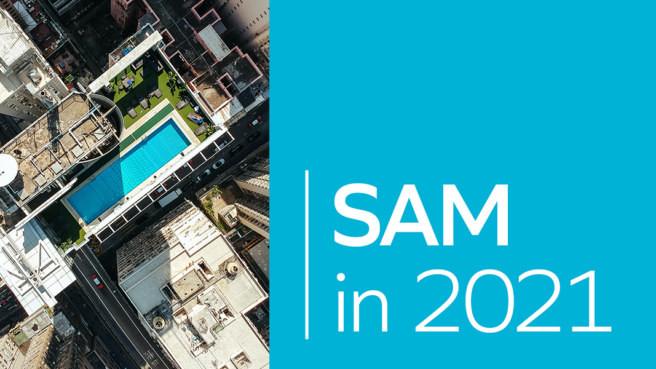SAM in 2021: How the Rise of Hybrid Work Impacts Software Asset Management

While the global pandemic didn’t create the concept of remote work, it certainly escalated the widespread popularity of the hybrid work model. More people than ever before now work from both home and office, and likely even a coffee shop or two along the way.
This working style shift has accelerated the already growing reliance on SaaS technology. While large, on-premise systems were once the norm for an enterprise, today’s companies are moving to the cloud en masse to keep employees productive no matter where they are. These macro trends have created significant changes for software asset managers (SAMs).
The heightened importance of SaaS management
According to a Snow survey of more than 400 IT leaders, 92% say their organizations were moving or had already moved to a hybrid work model. At the same time, more than 70% say their SaaS investment has increased in the past 12 months and nearly half of respondents report controlling SaaS sprawl is their biggest challenge.
While managing a limited amount of SaaS was on the list of SAM to-dos pre-pandemic, it has become wildly more important in the last year. No longer is there a singular priority of installing updates on your on-premise systems. To prevent budget over-runs and minimize security risks and costly non-compliance, software asset managers must now closely monitor SaaS licensing and usage.
Three steps to controlling SaaS
It’s never been easier to purchase software. The very aspects that make SaaS so appealing – easy to procure and deploy – can also lead to decentralized, unmanaged SaaS usage. Here are 3 steps SAMs can take to control their organization’s SaaS consumption and right-size their technology investment.
1. Ensure you have complete visibility
Knowing what you have in your environment and who uses what for what price is paramount to reining in budgets before they snowball out of control. Snow allows you to easily discover, manage and optimize SaaS applications through a single pane of glass, even those that don’t show up in financial systems or on credit card statements.
2. Formalize and streamline your renewal process
By using SaaS applications, your organization can continually rely on the most up to date software and receive the latest patches for security fixes and operational enhancements. To fully realize these benefits though, SAMs must ensure they are maximizing their renewal opportunities across all SaaS licenses. Accurate, real-time visibility into current use is the first step. The next step is to implement a defined process for a proactive review of the businesses license needs well in advance of the vendor’s renewal date.
3. Optimize your usage
SaaS also allows SAMs to continually optimize their company-wide reliance by scaling up or down their licenses as they are needed at regular intervals. You can cut down on wasted SaaS spend by identifying unused accounts, duplicate users and unnecessary premium subscriptions. This is a way to reduce software costs and minimize the risk of overspend and underutilization. But you also don’t want to reduce your users to a level that impedes productivity, so a certain level of pragmatism may be required. Rightsizing your technology investment for maximum productivity at the lowest cost is the goal.
Despite general concern over SaaS sprawl, most IT leaders are optimistic about the opportunities the hybrid work model brings. According to our survey, 57% say they are feeling excited about the larger trend of organizations moving to hybrid work.
That being the case, hybrid work still requires management for both a remote and physical environment with employees who continually pivot between the two. It’s up to IT, and SAMs in particular, to create a similar technology experience, regardless of location, in a way that encourages productivity and stays within budget.
See how Snow can help you unlock a unified view of your SaaS and on-premise environments.
This post is the sixth in a series of articles on SAM. Read our previous posts for insights on SAM implementation, how-tos and more.